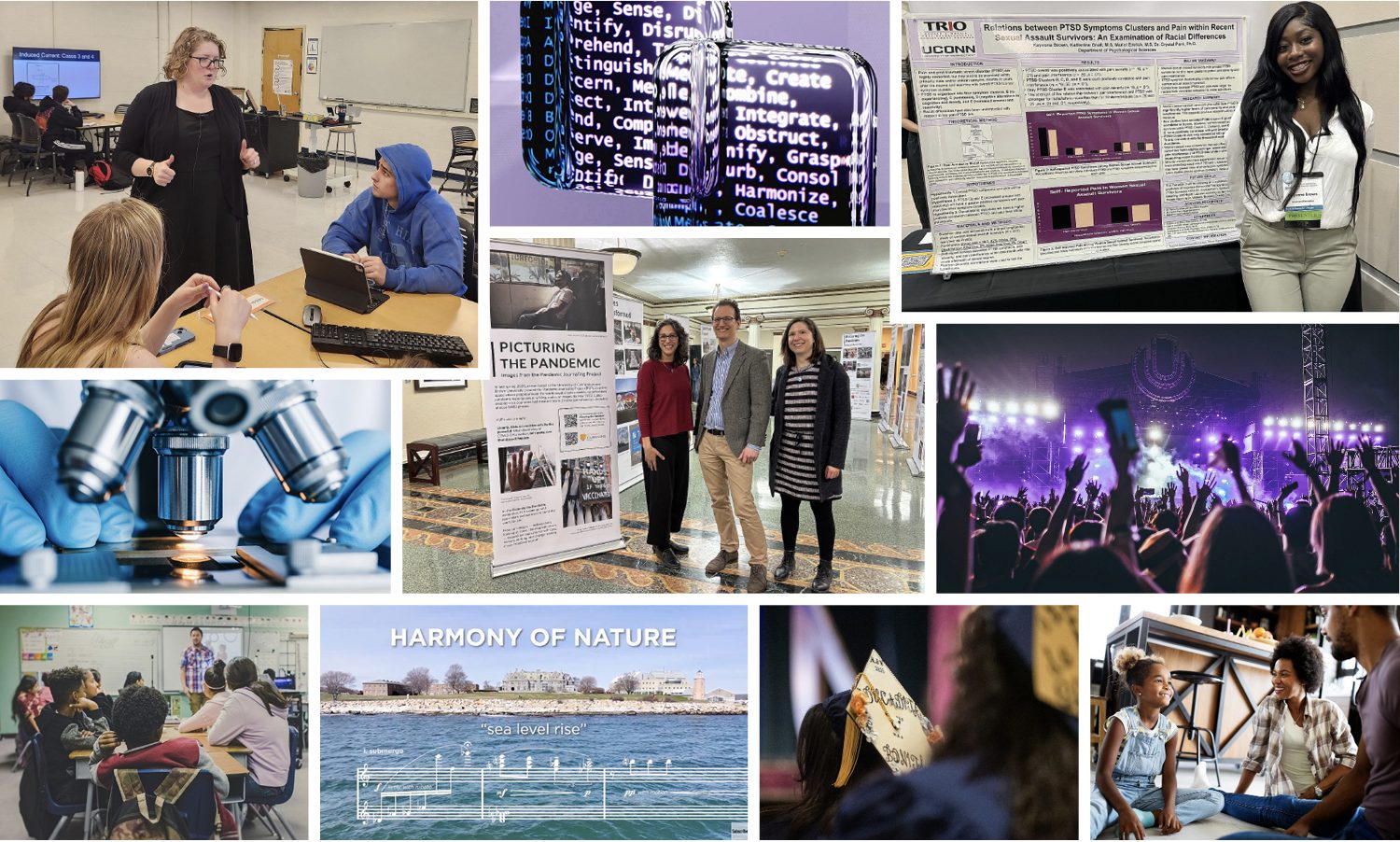 Dr. Bryan Huey, assistant professor of Chemical, Materials & Biomolecular Engineering, has received a $311,000 award from the National Science Foundation that will support his efforts to enhance the speed with which nano-scale surface properties can be mapped. The award, made under NSF’s Instrumentation for Materials Research (IMR) program, is two years in duration.
Dr. Bryan Huey, assistant professor of Chemical, Materials & Biomolecular Engineering, has received a $311,000 award from the National Science Foundation that will support his efforts to enhance the speed with which nano-scale surface properties can be mapped. The award, made under NSF’s Instrumentation for Materials Research (IMR) program, is two years in duration.
Dr. Huey will apply the funding toward enhancing and refining a method of microscopy used by researchers across the globe, Scanning Probe Microscopy (SPM). With SPM, an image of the specimen surface is obtained by positioning a sharp probe in close proximity to a specimen and then progressively scanning the sample in a line-by-line manner. Probe-surface interactions are simultaneously recorded as a function of position through an integrated flexible cantilever, allowing mechanical forces, electric fields, magnetic fields, local thermal properties, etc., to be mapped in three dimensions. Dr. Huey notes that SPM has been an enabling tool for nanotechnology since its invention in the early 1980s, providing the capability to measure and manipulate materials down to atomic scale resolution. A persistent constraint of SPM, however, has been its relatively slow speed, averaging four minutes per image or worse with little improvement over the past 25 years.
To address this limitation, Dr. Huey and his team have invented High Speed Scanning Property Mapping (HSSPM), a novel method that allows full-frame image acquisition in less than 1/10th of a second with resolution equal to that of conventional systems, for certain configurations. A new method of enhancing contrast (patent pending) was central to the development of the HSSPM technique. This over 1000-fold improvement has significant implications in terms of increased throughput and efficiency, large area imaging, and especially the ability to quantify dynamic effects with previously inaccessible spatial and temporal resolution.
Dr. Huey’s efforts will focus on further improving the technique to enable mapping of “large area” surfaces as well as nearly video-rate mapping of surface properties – capabilities deemed crucial for eventual industrial applications such as process monitoring on assembly lines. In the microscopy world, such “large areas” are on the order of 1000-times the width of a human hair. Because most SPM processes take so long to image even the width of a single hair, such studies used to be too slow and expensive to perform. Consequently, SPM has primarily been an enabling tool for research thus far, but the dramatic increase in speed afforded by HSSPM may counter this problem. An additional advantage of fast scanning is the far more widespread applicability in research and education. Dr. Huey said that the standard five minutes per picture can challenge the concentration of students and is difficult to incorporate into teaching and demonstrations. The advent of nearly video rate updates at nanoscale resolution is expected to dramatically enhance interest and interactivity.
 The ability to map dynamic processes as they are occurring is perhaps the greatest application, in Dr. Huey’s view. “It’s easy to map a surface with nanoscale resolution – at least with this $200,000 tool and some patience,” said Dr. Huey. “The bigger challenge is to monitor dynamic processes while still maintaining 10 nm resolution – for that we need HSSPM. For example, we are beginning to image the real-time response of a surface to temperature, pressure, light, and especially voltage. This way, we can observe how a material responds at spatial and temporal scales crucial to advanced technologies in configurations akin to the actual applications.”
The ability to map dynamic processes as they are occurring is perhaps the greatest application, in Dr. Huey’s view. “It’s easy to map a surface with nanoscale resolution – at least with this $200,000 tool and some patience,” said Dr. Huey. “The bigger challenge is to monitor dynamic processes while still maintaining 10 nm resolution – for that we need HSSPM. For example, we are beginning to image the real-time response of a surface to temperature, pressure, light, and especially voltage. This way, we can observe how a material responds at spatial and temporal scales crucial to advanced technologies in configurations akin to the actual applications.”
One rapidly advancing research area recently featured in an Applied Physics Letters article by the Huey group, is next-generation data storage technologies based upon ferroelectric thin films. The article documented the team’s successes using the HSSPM technique to achieve nanoscale and nanosecond resolution, which led to “novel insights into the fundamental mechanisms and practical limitations that define ultimate data densities, read/write times, data retention and reliability, etc.,” according to Dr. Huey. He notes that these materials are also employed in wireless transmitters and receivers, as well as ultrasonic actuators and detectors widely used in medical imaging, sonar, and even embedded anti-vibration systems in skis. “Ironically, though, we acquire so much more data, so rapidly, that we need the next generation hard drives we are helping to develop to work now, not tomorrow, because the present technology can barely keep up.”
The HSSPM is applicable to numerous other systems as well that may lead to performance improvements and new materials. Among the systems Dr. Huey’s group has already studied, or which they plan to examine in the coming months, are the effects of temperature on block copolymers; self-healing in molecular crystals, such as KDP (potassium dihydrogen phosphate), used as lenses in high power lasers; efficiencies in photovoltaic cells (including solar cells and optical switches); semiconductor flaw detection; and thermo-electro-optical properties of chalcogenide glasses, which are the coatings commonly found in writable DVDs that permit data recording.
Besides involving his own post-docs, graduate, and undergraduate research students in this project, Dr. Huey will make the HSSPM technology available to faculty and students across campus, as well as industrial research partners, through the Institute of Materials Science. The technique can also be easily transferred to other academic and industrial institutions because it is compatible with both legacy and next generation SPM systems. “The biggest question right now,” he said, “is just how much faster can we go? Our equipment – not any fundamental speed limit – is what is slowing us down at this point. This grant, and hopefully further support, will help us to answer that question.”
Click here to view footage of HSSPM images in motion. The short movie depicts 244 consecutive HSSPM images of a 4000nm x 4000nm area combined into a movie depicting in situ ferroelectric memory switching. The movie first presents nucleation-dominated switching in the positive direction (white to black contrast, for example a binary ‘1’), followed by backswitching in the negative direction (black to white, writing a binary ‘0’). This film is courtesy of R. Ramesh, UC Berkeley. HSPFM measurements were performed by N. Polomoff, Huey AFMLabs, UConn.


